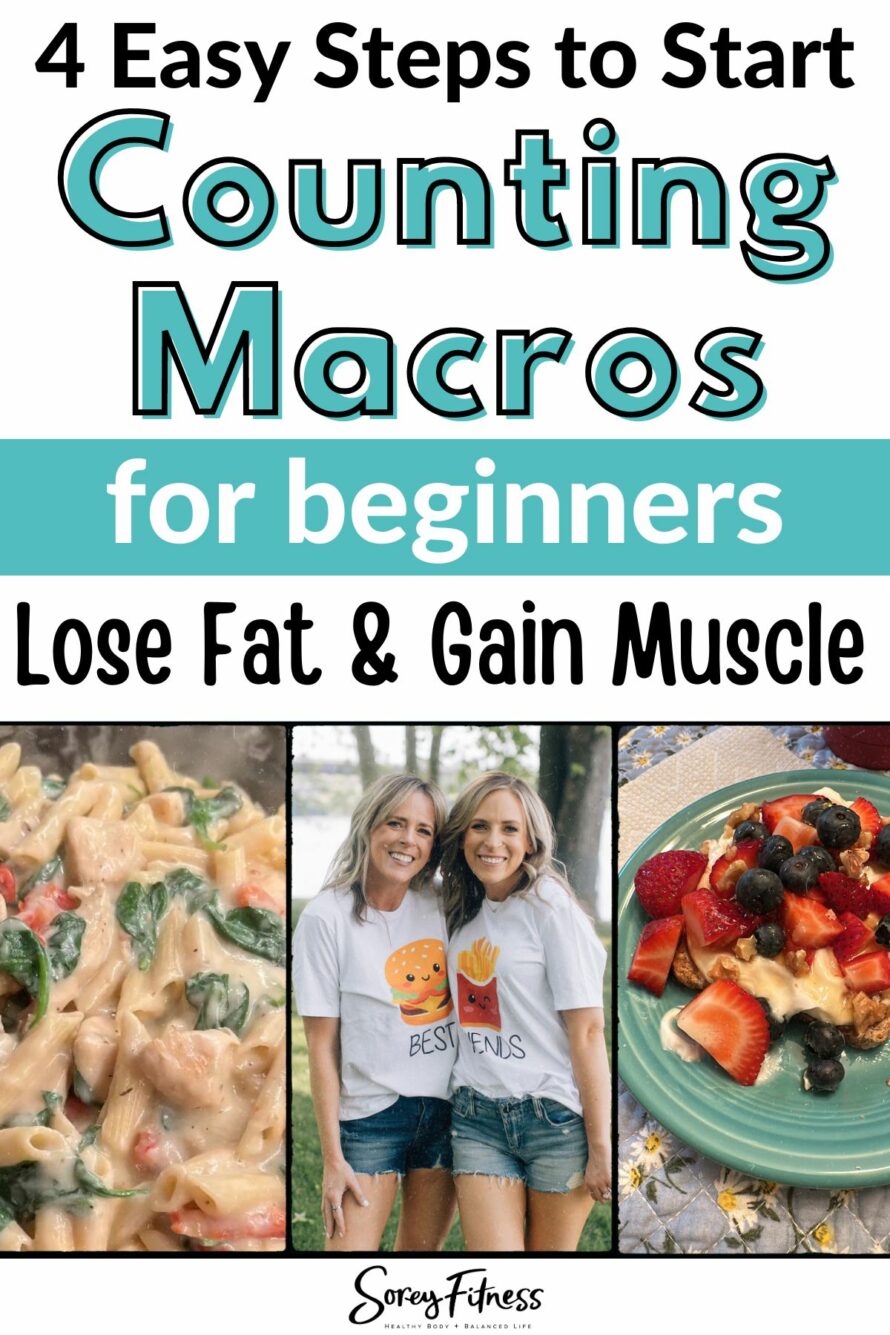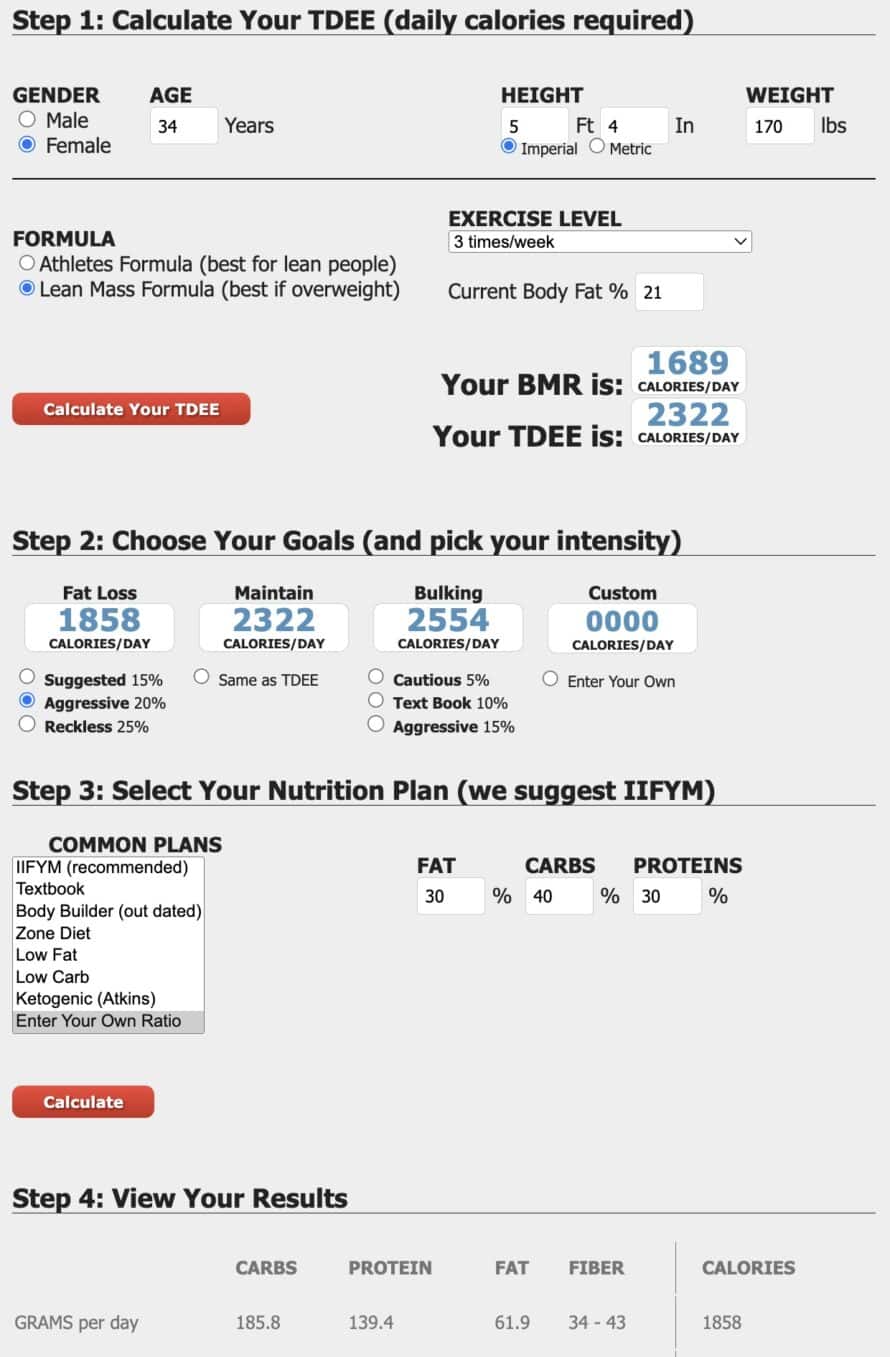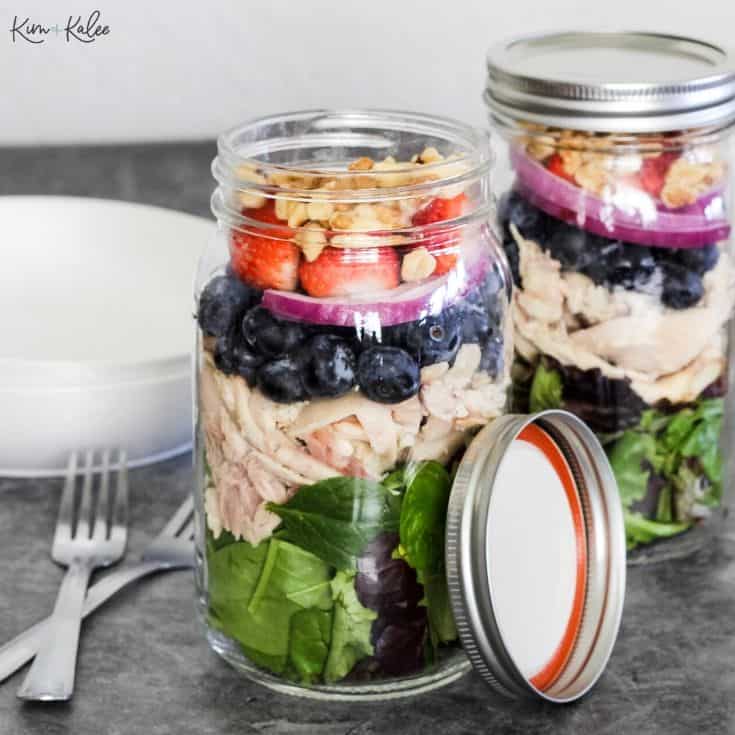Counting Macros 101: Best Macros for Weight Loss Female
This post may contain affiliate links. All opinions shared are my own. As an Amazon Associate I earn from qualifying purchases. Click to view our full disclosure.
Our free Counting Macros 101 Guide teaches the best macros for weight loss for women, as well as, provides a macro calculator, favorite macro-friendly recipes, and a sample meal plan.

If you’re tired of not seeing results or avoiding your favorite foods, this free Counting Macros 101 step-by-step guide for beginners is for you!
Counting macros can also be called flexible dieting or IIFYM (which is an acronym for If It Fits Your Macros).
What are macros?
Macros is short for macronutrients. The 3 macronutrients are carbohydrates, proteins, and fats. Each macronutrient plays a different, vital role in fueling our bodies.
Micronutrients are typically the vitamins and minerals found in these 3 macronutrients.
Note: You may also see alcohol, water, and fiber as separate macronutrients, but carbs, protein, and fats are your 3 main ones.
|
Counting Macros |
Calories in Each Gram |
Healthy Examples |
| Protein | 4 | Eggs (white or whole), Greek yogurt, Chicken, Turkey, Salmon, Beef, Beans, Soy |
| Carbohydrates | 4 | Oats, Whole grains, Millet, Quinoa, Fruits,Veggies, Chips, Cookies |
| Fat | 9 | Olive oil, Coconut oil, Nut butter, Avocados, Walnuts, Salmon, Egg Yolk |
You can also factor in alcohol and fiber if you want, but it’s optional.
Alcohol isn’t going to have a nutritional value, but it does pack a lot of calories. So it’s best to watch how much you drink if you’re trying to hit a goal.
Fiber is a powerful add-on as a micronutrient. It helps us stay full and improve overall health.
We love the Macro Friendly Food Recipes if you’re new to meal planning!
The Three Macronutrients
Carbohydrates
Carbohydrates are our bodies’ primary source of energy. They help with muscle function, as well as, mental functions performed by our brain.
There are 2 main types of carbohydrates – simple and complex.
Simple carbohydrates are quickly absorbed by the body and can spike blood sugar levels. In contrast, complex carbs are rich in fiber and are absorbed over time. This keeps your blood sugar from spiking and helps you feel full longer.
Protein
Protein is used for building and repairing tissues in the body. Without protein, you would experience issues with muscle growth or maintaining muscle.
Protein is found in both animal and plant sources including fish, beef, chicken, eggs, beans, legumes, and even soy.
Fat
Fat helps with our bodies’ energy, hormone production, and the absorption of vitamins and minerals.
Just like carbs, you can have healthy fats and not-so-healthy fats.
Healthy fats are found in things like avocados, nuts, and seeds. The unhealthy fats are typically found in processed and fried foods.

Why should I count macros?
Counting macros helps you become aware of how different foods affect and fuel your body. It can also help with weight loss and overall health and wellness.
Figuring out your macros is essentially deciding how many carbs, proteins, and fats will make up your diet. This ratio can help you reach your goals – such as weight loss, losing fat, and/or gaining lean muscle.
Do calories count when counting macros?
If you’re planning on counting macros, you’ll essentially be counting calories too. The difference between counting calories and macros is that with macros you’ll pay attention to how your calories are being consumed — either with carbs, proteins, or fats.
Carbs, proteins, and fats all contain calories. Here’s a caloric breakdown for all 3:
- Carbohydrates contain 4 calories per gram
- Protein contain 4 calories per gram
- Fat contain 9 calories per gram
What is the best macronutrient ratio for fat loss?
Th best macro ratio for weight loss for females and males will vary depending on their current weight, height, age, activity level, and goals. With that said, a commonly known best macro ratio for weight loss is 40% carbohydrates, 30% proteins, and 30% fats.
The 40/30/30 ratio helps support weight loss while also promoting fat loss and maintaining the lean muscle.
With any macro ratio, you’ll want to make sure you’re eating in a caloric deficit to lose weight. This means you’re eating less calories than you are burning per day. Instead of starving or overdoing exercise, we recommend combining a slight reduction in calories consumed and a slight increase in physical activity.
What should a woman’s macros be to lose weight?
While each woman’s ideal macro ratio may be different, a common starting macro ratio for women wanting to lose weight is 40% carbs, 30% protein and 30% fat.
Check out these awesome Macro Friendly Recipes to simplify meal prep!
How do women calculate macros for fat loss?
To figure out your macros, women will need to first figure their total daily calorie allowance. Then you’ll take that number and multiply it by 0.3 for protein and fat and 0.4 for carbohydrates. The protein and carbohydrate figures are then divided by 4 and the fat figure by 9 to give your grams for each per day.
You can use Fitlabs online calculator to find your daily caloric need, and then you can even have the calculator figure your macros.
Below is a picture of an example of how the macro calculator works. We used the average US female’s height and weight for this example.

Figuring Your Macros Without a Calculator
If you’d like to figure your macros without an online macro calculator you can. To determine the macronutrient ratio for the 34-year-old woman who wants to lose weight, we need to calculate the total daily calorie intake and then distribute the calories according to the specified macro ratio.
Step 1: Calculate Basal Metabolic Rate (BMR)
The Basal Metabolic Rate (BMR) represents the number of calories the body needs to maintain basic functions at rest. The Harris-Benedict equation is commonly used for this purpose:
For women: BMR = 655 + (4.35 * weight in pounds) + (4.7 * height in inches) – (4.7 * age in years)
- Given: Weight = 170 lbs Height = 5’4″ = 64 inches Age = 34 years
- BMR = 655 + (4.35 * 170) + (4.7 * 64) – (4.7 * 34) BMR = 655 + 739.5 + 300.8 – 159.8 BMR = 1535.5
Step 2: Adjust for Activity Level
Since the woman does light exercise a few times a week, we can multiply the BMR by an activity factor. Let’s assume an activity factor of 1.375 for light exercise:
Total Daily Calorie Intake = BMR * Activity Factor Total Daily Calorie Intake = 1535.5 * 1.375 Total Daily Calorie Intake = 2113.3125 (approximately 2113 calories)
Step 3: Distribute Calories According to Macros For Weight Loss Female
Good macros for weight loss female would be a macro ratio is 40% carbohydrates, 30% proteins, and 30% fats typically. So we’ll use that in our example, but please note this may vary for individuals.
- Carbohydrates: 2113 (total daily calories) * 0.40 (percent of carbs to consume) = 845.2 Calories from Carbohydrates
- Proteins: 2113 (total daily calories) * 0.30 (percent of protein to consume) = 633.9 Calories from Proteins
- Fats: 2113 (total daily calories) * 0.30 (percent of fats to consume)= 633.9 Calories from Fats
Step 4: onvert the calorie values for each macronutrient into grams:
- 4 calories Carbohydrate per grams = Calories from Carbohydrates / 4 Carbohydrate Grams = 845.2 / 4 Carbohydrate Grams = 211.3 g
- 4 calories Protein per gram = Calories from Proteins / 4 Protein Grams = 633.9 / 4 Protein Grams = 158.475 g
- 9 calories Fat per grams = Calories from Fats / 9 Fat Grams = 633.9 / 9 Fat Grams = 70.433 g
So, the macro ratio for the 34-year-old woman with the specified goals is approximately 40% carbohydrates, 30% proteins, and 30% fats.
This means she’d eat approximately 2113 calories broken down into 211 grams of carbohydrates, 158 grams of proteins, and 70 grams of fats.
Needless to say the macro calculator is definitely your friend unless you just enjoy doing math in your spare time! :P
Note: Counting macros isn’t a one-size-fits-all diet. You may need to tweak your macro ratio depending on your needs and goals. It’s best to talk with a registered dietician to determine the best macro ratio for weight loss or any other goals you have in mind.

Macro Friendly Recipes
We love Macro Friendly Food for new recipes every month! You can get 10% off the first month with code KIMANDKALEE. The macro meal planning tool is ran by a mom of four named Elyse. All of the recipes are family-friendly and include calories and macros! She adds new recipes each month to keep you from getting tired of the same meals too!
Why does Counting Macros Work?
Counting macros offers a flexible diet because you can choose any foods you want — as long as they fit into your macros for the day. Macro dieting is also effective for weight loss because you’re essentially also tracking calories and should be a caloric deficit if your goal is weight loss.
Why You Should Track Macros vs Calories
The main reason you may want to track macros over calories is because calories only contribute to the number on the scale – not your body’s composition of muscle and fat. Macros can help you not only lose weight but also help you lose fat, maintain muscle mass, or even gain muscle.
We love these Macro Friendly Food Recipes if you’re new to macros!
Why do women love counting macros?
So many other diets are restrictive. If you look at popular diets like the Whole 30 or keto, they all eliminate something. With counting macros, nothing is completely off limits. Plus, macros can help you hit your body fat and muscle mass goals along with weight loss.

Who is Counting Macros for?
Someone who is:
- tired of food restrictions
- looking for a program that doesn’t take a lot of time or effort
- wore out by the same old healthy foods over and over
- wanting the flexibility to eat what they want at social events
- busy parents & professionals who just want to eat “balanced” again
- tired of tracking every calorie and not seeing the weight come off
Grab new and delicious Macro Friendly Recipes every month! Get 10% off with code KIMANDKALEE

The photo above includes 3 recipes we made using Macro Friendly Food’s recipes!
The macro meal planning tool makes tracking your macros so much easier, and you can get 10% off with code KIMANDKALEE.
Example Best Macros For Weight loss Female Meal Plan
Here’s an example meal plan that follows the specified macro ratio for the 34-year-old woman aiming to lose weight.
Keep in mind that the quantities are approximate and can be adjusted based on individual preferences and nutritional needs.
Breakfast: Scrambled Egg White and Vegetable Wrap
-
- 2 egg whites
- 1 whole-grain tortilla
- Mixed vegetables (e.g., bell peppers, onions, spinach)
- 1 slice of avocado
- Total Carbohydrates: ~25g
- Total Proteins: ~15g
- Total Fats: ~5g
Morning Snack: Greek Yogurt Parfait
-
- 1 small container of plain Greek yogurt
- 1/4 cup of mixed berries
- 1 tablespoon of chopped nuts (e.g., almonds)
- Total Carbohydrates: ~15g
- Total Proteins: ~10g
- Total Fats: ~7g
Lunch: Grilled Chicken Salad
-
- Grilled chicken breast (3 oz)
- Mixed greens
- Cucumber, tomato, and red onion slices
- 2 tablespoons of vinaigrette dressing
- Total Carbohydrates: ~20g
- Total Proteins: ~25g
- Total Fats: ~10g
Afternoon Snack: Carrot Sticks with Hummus
-
- Carrot sticks
- 2 tablespoons of hummus
- Total Carbohydrates: ~15g
- Total Proteins: ~5g
- Total Fats: ~6g
Dinner: Baked Salmon with Quinoa and Steamed Vegetables
-
- Baked salmon fillet (4 oz)
- 1/2 cup of cooked quinoa
- Steamed broccoli and cauliflower
- Total Carbohydrates: ~30g
- Total Proteins: ~25g
- Total Fats: ~12g
Remember that these quantities are approximate and can be adjusted based on the woman’s preferences, caloric needs, and specific dietary requirements.
While this example of what a woman could eat following a 40/30/30 macro ratio includes nutrient-dense food, you can eat any food if it fits into your diet.
For example, a chicken breast with rice has the same macros as a McDonald’s Big Mac.
Of course one is healthier than the other, but this diet does give you that flexibility to pick and choose. So to have a 7 Day meal plan or something feels odd to me.

Clean Eating vs Counting Macros
You can still eat clean while counting macros. Counting macros just allows you to include less “clean” options.
With that said, if you eat junk everyday and just focus hitting your macros with no regard to the nutrition of your food, you’ll likely feel hungry, tired, and in a brain fog.
We like choosing healthy foods 80% of the time and leaving 20% room for those Big Macs or whatever it is you want to fill your macros with.
This keeps your naturally healthy foods as the main part of your diet, and counting macros is also going to help you lose the weight and tone up!
You may also like: What is Clean Eating? Tips, Meal Plans, and Recipes
Bad Habits with Counting Macros
Just like anything, it’s going to take perfecting your habits. There are 4 common set-backs with macro dieting, but now you’ll know what to watch for.
1. Skipping Healthy Options
If you’re not getting in your healthy foods, your body won’t have enough vitamins and minerals it needs to run well. Make sure to keep at least 80% of your foods healthy!
2. Consuming Low-Quality Protein
On this diet, you can have fast food and hot dogs every day if you planned it right. However, that isn’t a way to live!
Eating low-quality meat can limit the number of good amino acids your body needs, and it can hurt your overall health. Aim for some type of non-meat protein each day like quinoa, beans, soy or yogurt.
3. Eating Simple Carbohydrate Crashes
If you’re loading up on cookies, expect a sugar crash to hit you hard! Your carbs should be from complex carbohydrates or fresh fruits and veggies.
4. Missing Healthy Fats
If you’re eating junk or fast food, you’re likely getting in your fat macros from bad fats that hurt your heart and raise your cholesterol. Healthy fats include walnuts, almonds, avocado and ghee.

Counting Macros FAQ
Should I workout more when I’m counting macros?
While this diet did come from the competitive fitness industry, you don’t have to be a pro athlete to follow this diet. We love to workout at home for 30-45 minutes most days.
Should macros be different on rest days?
We like to look at macros from a weekly basis versus a daily one.
For example, if you’re goal is 2113 calories per day on a 40/30/30 ratio, you should be hitting approximately 14,791 calories per week on a 40/30/30 ratio.
Therefore, you can keep your macros at the same level whether it’s a workout or rest day.
How should I track my macros?
We personally use MyFitnessPal all the time. It’s easy to input your foods, and there are a lot of recipes already included in their database. Plus, the free option still works great!
What if I don’t track 100% of my food?
If you want to see results, you will need to track your food. Also, you may want to skip or limit eating out when you can because it will be harder to track than if you fix your food at home.
With that said, you shouldn’t obsess about any diet. If tracking brings out food issues for you, we’d say pick another diet.
How often should macros be adjusted?
Your macros should be adjusted every 3 to 5 weeks or if you’re no longer losing 1 to 2 pounds per week if that’s your goal.
Do I need to recalculate my macros as I lose weight?
You may need to adjust your macros for every 10 to 15 pounds you lose. You may also need to recalculate if your weight loss has stalled for over 3 weeks, or you’ve hit your goal.
Best Flexible Dieting Books
If you’re wanting to take your studying of macro diets further, or just want some macro recipes, check out these books:
- The Shredded Chef: 120 Recipes for Building Muscle, Getting Lean, and Staying Healthy
-
Slow Cooker IIFYM Cookbook: Over 51 Delicious Recipes for Flexible Diet
-
Flexible Dieting Handbook: How To Lose Weight by Eating What You Want
We also love the online platform Macro Friendly Food because of all of the amazing recipes and meal planning capabilities. Grab 10% off with code KIMANDKALEE
3 Common Problems That Stall Weight Loss
We’ve told you all of this good stuff about watching your macros for weight loss, but what happens if it doesn’t work? We adjust!
I’m not losing weight.
If the scale isn’t moving, it could be the time of day, hormones, water retention or digestion.
If you’re weighing at the same time each day and eating pretty consistently, it could be that you’re tracking incorrectly or underestimating how much you’re really eating.
Take a week to really hone in on tracking your macros and portions.
If you know you’re tracking is great, then see about adjusting your calories (and macros) down by 5% and see where you are next week.
I’m hungry!
It is a new way of eating! One thing you can do is to ask yourself, “Am I really hungry?”
Sometimes we’re just bored, thirsty, or craving a food mentally.
If you are hungry after all that, you can increase your calories and macros up to 5% and see if that helps.
(When we’re hungry or craving a sweet, we love Built Bars!)
I’m struggling when I’m with friends.
If you’re doing great tracking except when you’re with your friends take a few tips to adjust the situation.
- plan ahead – pick the place to eat or look over the menu ahead of time
- order first – to prevent any temptations
- cut back on alcohol with seltzer
Final Note
Just keep in mind — The best macro ratio can vary – some research has also shown different body types may do better with different ratios.
- For example, if you’re an Ectomorph, someone that is naturally thin with a high metabolism, you may do something like 25% protein, 55% carbs, and 20% fat.
- On the other hand, if you’re a Mesomorph, someone that puts on muscle easily, you might do 25% protein, 55% carbs, and 20% fat.
- Finally, if you’re an Endomorph, someone has a slow metabolism or is naturally broad, your range might be 35% protein, 25% carbs, and 40% fat.
Need help creating a macro friendly meal plan? Check out Macro Friendly Food for some amazing recipes that fit into macro meal plans! Get 10% off with code KIMANDKALEE






I had my Macros done from some else she hasn’t been helpful on how too under stand how to use the macros and meal planning. I think she has me higher calories and protein. Do you do macros ? If I wanted mind done over. I looking for sample meals for the week? I am going too start 4 weeks protocol and not sure about which meals to make with color containers?
Angela
Hey Angela,
We don’t calculate others macros, but if we did – we would use the formula in this post. Have you tried it and compared it to what she recommended?
Also, we would probably pick macros OR the color containers. Both options work, but trying to do them can leave you doing too much math and can leave you questioning yourself…speaking from experience. :P We do have a sample 4 Week Gut Protocol meal plan you might like https://soreyfitness.com/nutrition/4-week-gut-protocol-meal-plan-recipes/ You’d need to tweak it of course, but it can take a lot of the planning and guesswork out of it! :)
We also have macro recipes and a meal plan builder we love if that sounds like a better fit! Just let us know :) We can send it over instead if you want!
Are you doing the new workouts for the 4 Week Gut Protocol Super Block too?